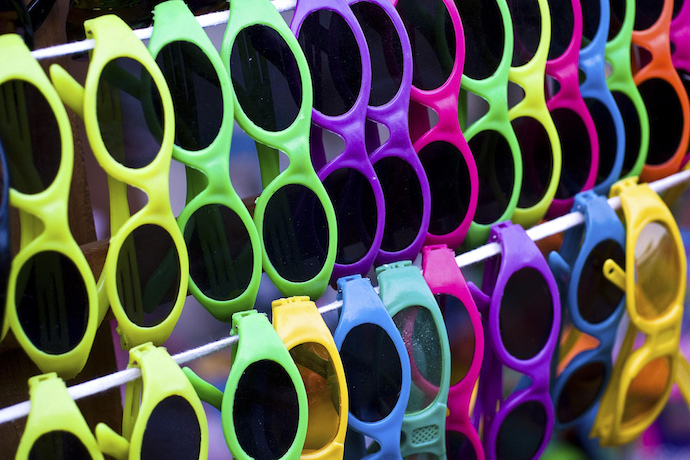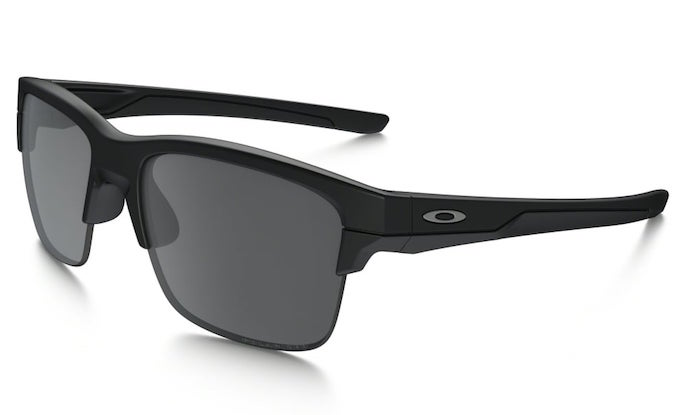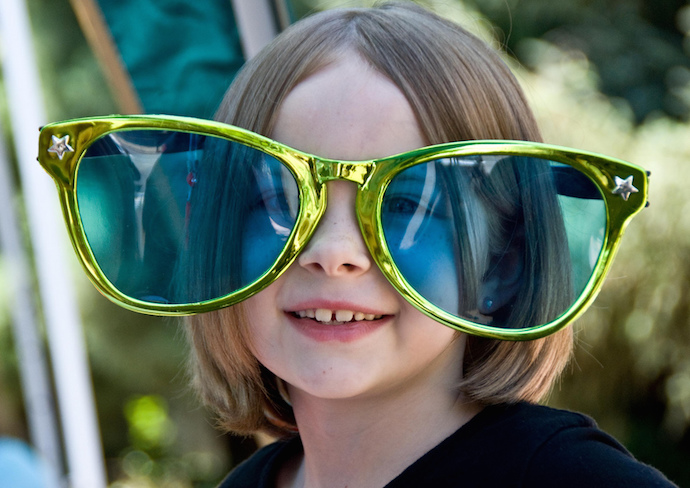
Don’t buy these onesImage source: Hafiz Issadeen – Flickr
Surfers need good sunglasses. Not because we need to look cool (although that is a factor), but because we are more susceptible to the harmful effects of sunlight than most.
Why you need sunglasses?
Surfers spend a lot of time exposed to the sun’s ultraviolet (UV) light, and this can cause permanent eye damage. A prevalent form of eye damage is Pterygium, a pink fleshy tissue that forms over the eyeball. This can cause blurred vision, itchiness, burning sensation and/or a gritty feeling in the eye. This eye condition is so common among our tribe that it’s known as ‘Surfer’s Eye’. Cataracts, eye sunburn and macular degeneration are other possible problems surfers face if they don’t protect their eyes.
What’s the cost?

My personal favourites – Oakley ThinlinksImage source: Igero
The potential cost to your sight and health is very high, but protective sunglasses are relatively cheap. For under £50, you can easily pick up a pair of quality sunglasses, look cool and protect your eyes.
For example, a pair of brand new Arnette Blowouts with 100% UV protection, polarised polycarbonate lenses and lightweight frames are available online for £45 (RRP £90).
Or if you fancy something a bit more high tech and refined, I can personally recommend Oakley Thinlinks with 100% UV protection, HD optics, polarized lenses, black iridium coated and innovative O-matter lightweight frame for £120 (RRP £150). I got my pair online from Igero.
What do I need to look out for?

UV protection and fit are importantImage source: Les Defoor – Flickr
Price and appearance are obviously important but here’s what surfers need to look for:
• UV Protection
UV protection is the number one priority when choosing a pair of sunglasses. Only ever buy sunglasses that offer 100% UV protection. This should be clearly stated on the label, and ideally endorsed by a recognised authority. In the UK look for the European CE mark or British Standard BS EN 1836:1997. For more information on UV protection, read Cancer Research UK’s guide on how to enjoy the sun safely.
• Fit and Size
Fit, style and size are also important factors. A close fit will reduce exposure to UV rays, but the frame should only contact your skin just above your ears and on the bridge of your nose. Larger lenses will offer broader protection and wrap-arounds (wider arms) will reduce rays entering from the side.
• Polarised lenses
Polarised glasses offer no extra UV protection, but they are beneficial to water users. Polarisation reduces glare from reflective surfaces, so they allow you to view the ocean with greater contrast and clarity. Particularly useful for fishermen as they eliminate the sun’s reflection on the water and allow you to see beneath the surface.
• Weight
Cheap sunglasses are often made with heavy and uncomfortable materials. I’ve got a big sensitive nose, so I find most sunglasses unwearable after ten minutes. As a consequence I often dispense with sunnies, and choose to squint instead. Not good.
However, my new Oakley’s are really lightweight, well balanced and comfortable to wear for long periods. So in my opinion it’s worth spending a bit more, especially if you’ve got a sensitive nose like me.
• Materials
Metal is a popular frame material, as it’s malleable and easy to adjust.But metal tends to be heavy or expensive and can easily get bent out of shape. Not ideal for surfers.
Plastic is a good option if you’re on a budget, but for hard wearing frames that can stand up to an active lifestyle – titanium or nylon is the way to go. Look out for innovative technologies like Oakley’s O-Matter which uses nylon to create a bendable, super lightweight and tough frame.
• Lens colours
The colour of your lenses can make a difference. Dark grey lenses are by far the most versatile and popular colour. Grey or smoke lenses will reduce glare, provide true colour perception and reduce eye fatigue. Avoid really dark lenses, they might help reduce glare but they will also reduce vision.
Other colours well suited to water sports include blue and brown. Blue lenses as well as looking cool, reduce glare, increase contrast and enhance colour perception. Brown or amber lenses reduce glare and improve contrast, but they’re also good for depth perception and work well in low light conditions.
• Impact resistance
Poor quality sunglasses are susceptible to snapping and lense coatings will be easily scratched or worn off. Good quality frames and lenses should be impact resistant.
Respectable manufacturers have developed technologies and tests to ensure their sunglasses will withstand bumps, knocks and even ball bearings travelling at 102mph.
Now you can choose a new pair of sunglasses knowing they will protect, last and look cool. If you’re looking for a protective glasses to wear in the water check out my Surf Goggles post.